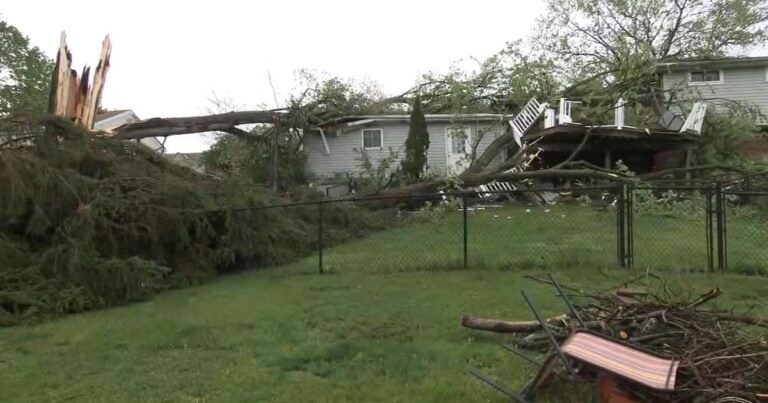
During its Switch 2 Direct on April 2, Nintendo revealed that some Switch 2 cartridges would be Game-Key Cards. Rather than storing the game, these cartridges instead simply act as keys to unlock a download of the title in question.
The first such Game-Key Cards are now listed for pre-order, including the Switch 2 version of Yakuza 0, Hitman: World of Assassination: Signature Edition, and Madden 26. More games are expected to follow.
“Seeing Nintendo do this is a little disheartening,” says Stephen Kick, CEO of remaster specialists Nightdive Studios. “You would hope that a company that big, that has such a storied history, would take preservation a little more seriously.”
The worry is that at some point in the future, Nintendo’s Switch 2 eShop servers will be turned off – just as the Wii U and 3DS eShops were closed – meaning these Game-Key Cards will become little more than useless pieces of plastic. At that point, the only way to access these games will be through consoles that already have the code downloaded.
But this is just another step along the road to the “inevitable” all-digital future, says Jon-Paul Dyson, director of the International Center for the History of Electronic Games at The Strong Museum in Rochester, New York. “Nintendo was, in some ways, the slowest of the major console producers to be going there.”
Professor James Newman, course leader on game development at Bath Spa University and co-founder of the Videogame Heritage Society, says that in one sense, Nintendo’s move towards Game-Key Cards won’t necessarily make a huge difference.
“Even when a cartridge does contain data on day one of release, games are so often patched, updated and expanded through downloads that the cart very often loses its connection to the game, and functions more like a physical copy protection dongle for a digital object,” he notes.
“No institution is going to be able to preserve everything”
Jon-Paul Dyson, The Strong Museum
So as digital games rapidly become the norm, where does this leave game preservation efforts? How do you preserve a digital game for the future? And what exactly do you save?
“Mobile games, in some ways, are the biggest challenge,” says Dyson, thanks to the way they can change massively over time and be suddenly pulled from stores if not kept constantly updated. So which version do you keep? “In some ways it doesn’t matter as much what the version is, as long as you have clear documentation of what version you have saved,” Dyson thinks.
But The Strong will typically preserve versions of a digital game at several points in its lifetime, often near its release and after any major modifications, as well as when it’s about to be pulled from digital stores.
Storing all these digital games and making them accessible to future generations poses a huge challenge, especially if the game requires an external server to function. The museum tries to get DRM-free versions of games if it can – although that’s not always possible with console releases – and the data is stored in a number of ways.
The most expensive way is through the professional cloud-based digital preservation platform Preservica, but the museum also uses local storage devices, and even magnetic tape. “You know, tape is funny,” says Dyson. “Storage on tape keeps getting better and better: it’s one of those things that’s an old technology, but in some ways, it’s so good.”
There are limits to what The Strong can realistically do, however, even as one of the most well-funded efforts in the games preservation space. “No institution is going to be able to preserve everything,” counsels Dyson, who says it’s impossible to save every single game – especially when you consider things like game jams or one-off titles made by students.
“It would be like saying we’re going to preserve every piece of every story ever written,” he says. “So I’ve become a little bit more comfortable with loss to some degree.”
Instead, the focus at The Strong has shifted towards a more holistic view of preserving videogame history. “Sometimes that means preserving the game, but sometimes it’s as important to preserve the history of the player, the history of the emotional impact of that game. What did that mean for society at the time? What did it mean to produce that game?”
Newman agrees: “There is a taken-for-granted assumption that, because play is so important, the object of preservation should be maintaining long-term playability. This makes perfect sense, but it is worth asking not only what we do, but also what we don’t learn from playing games and whether there are other things we could and should be preserving as well.”

He gives the example of speedrunning communities and the way they approach and manipulate games in different ways.
“What I would really want is an archive of performances that show all the different ways that a game can be played and played with,” Newman says. “So a collection of video recordings of playthroughs would be extraordinarily valuable in helping us understand the meanings of games and play.”
“Essentially, my argument is that a move towards digital-only games encourages us to go back and rethink what we’re actually trying to achieve and what materials will be most useful in the future,” he continues.
“My thought is that moving [away] from thinking about game preservation being focused around saving bitstreams allows us to think about creating collections of documents about games that can include insights from designers and developers, players, journalists, historians, academics, and so on.”
In terms of preserving both games and the stories around them, Dyson says fan communities are invaluable. “Game preservation is important not only because games are important, but because the act of preservation is an act of love, and it’s something that has meaning in and of itself,” he says.
“That’s one reason why fan communities have been so important throughout the whole history of game preservation, and why it’s so necessary for institutions to work with fan communities.”
Kick thinks that in addition, developers and publishers should work more closely with communities who have been the champions of old games and “have done what they can with whatever limited resources they have to make them accessible again”.
He was particularly happy to see Bethesda hand out keys for The Elder Scrolls IV: Oblivion Remastered to the volunteer team behind the Skyblivion mod. “I think that’s exactly what I’d like to see more of, and that’s something that we do extensively on the Nightdive side.
Whenever we have an opportunity to do a new game, the first thing we do is go and seek out the community that’s made it playable to this point, and either consult with them, contract them, or, in some cases, even hire some of those team members.”
Dyson adds that fan communities also have an advantage over institutions in some ways. “Sometimes they have the freedom to do things that are maybe in grey areas,” he says, referring to legally tricky subjects like emulation and file sharing.
“I think everybody is definitely putting in way more effort these days to back up their stuff, which is great. It’ll make our jobs easier as a studio that primarily focuses on remasters.”
Stephen Kick, Nightdive Studios
“But the downside of fan communities is that they’re not necessarily sustainable over the long run,” he continues. “They start because someone loves something that was deeply meaningful to them. But what happens when that group ages out, when no one really cares about, say, text-based adventures of the early 1980s? That’s where institutions play a role, and institutions hopefully have long-term stability.”
Ultimately, a joint effort is required among groups across the world. “Game preservation covers such a broad range of activities, has a wide array of different audiences and use cases and requires such a wide variety of skills, that we need to start thinking about it as a distributed effort,” says Newman.
“Different organisations will have different interests, knowledge and techniques, so we need to find ways of co-ordinating all that expertise so that people can learn from one another and things don’t fall through the cracks.”

Archiving the past
But given Nintendo’s recent move, are modern companies making game preservation harder? Are things getting better, or worse? “I think that the Nintendo example is a step back,” says Kick. But he adds that he has cause for optimism elsewhere, citing the recent commitment by Square Enix, Sega, Capcom and Taito to archive development materials.
“While that’s really nice, it would have also been nice if they did this 20 years ago, right?” Kick laughs. “But that could be said for everybody. I think everybody is definitely putting in way more effort these days to back up their stuff, which is great. It’ll make our jobs easier as a studio that primarily focuses on remasters.”
“There won’t be that struggle, hopefully, to find source code and assets to create collections and that kind of stuff in the future.”
He adds that there’s now a clear financial incentive for companies to do this thanks to the popularity of remasters. “Ten years ago, that definitely wasn’t the case. I distinctly remember having many conversations with first parties about re-releasing their back catalogue and having the response be, ‘Well, no one’s going to buy that. Why would anyone want to play an old game?’ The sentiment has definitely changed over the years in terms of remasters and rebuilding communities and reintroducing new and old players to established IP. It’s much easier to sell and advertise something that already exists, as opposed to a new idea.”
Dyson agrees that companies are realising there’s a commercial benefit to archiving their old materials, but notes that it’s still a secondary commitment. “The overwhelming pressure on game companies is still to make money, and so preservation is always going to be a little bit of an afterthought, because it’s never going to drive that same level of profit that a blockbuster new game will.”
Newman adds that although there are “definitely more developers and publishers who are actively archiving their work”, not everything will be saved. “We’re still figuring out what is important and what the scope of preservation should be.
“For some people, the code is going to be crucial, but for others, the scrappy level design notes on a piece of paper, the PowerPoint document of the pitch presentation, the abandoned levels or character designs that never made it to release will be just as valuable. That is often the stuff that is most vulnerable and most likely to disappear,” Newman continues.

Dyson argues that companies should have a plan in place detailing how each new game and the materials around it will be preserved for the next 50 or 100 years. “That would force companies to think about the long haul, and not just the immediate ease of digital access,” he says.
“I think the very act of thinking that through builds the commitment to game preservation in this wider sense: what does it mean to preserve the game, or the history of your company, or the impact this game had on players?”
For his part, Kick would like to see more big game companies going back and showing some love to their older titles. “The Command and Conquer remaster that EA did was amazing,” he says. “But it seemed like a flash in the pan.
“They have such an extensive catalogue of stuff, I would have hoped that they would have seen that and gone, ‘All right, well let’s do Clive Barker’s Undying next, or let’s do a Bullfrog pack with Dungeon Keeper and Magic Carpet, and all the other wonderful games that they’ve done’,” Kick continues.
“That’s what I would personally like to see more of: some of the big players doing it themselves.”





